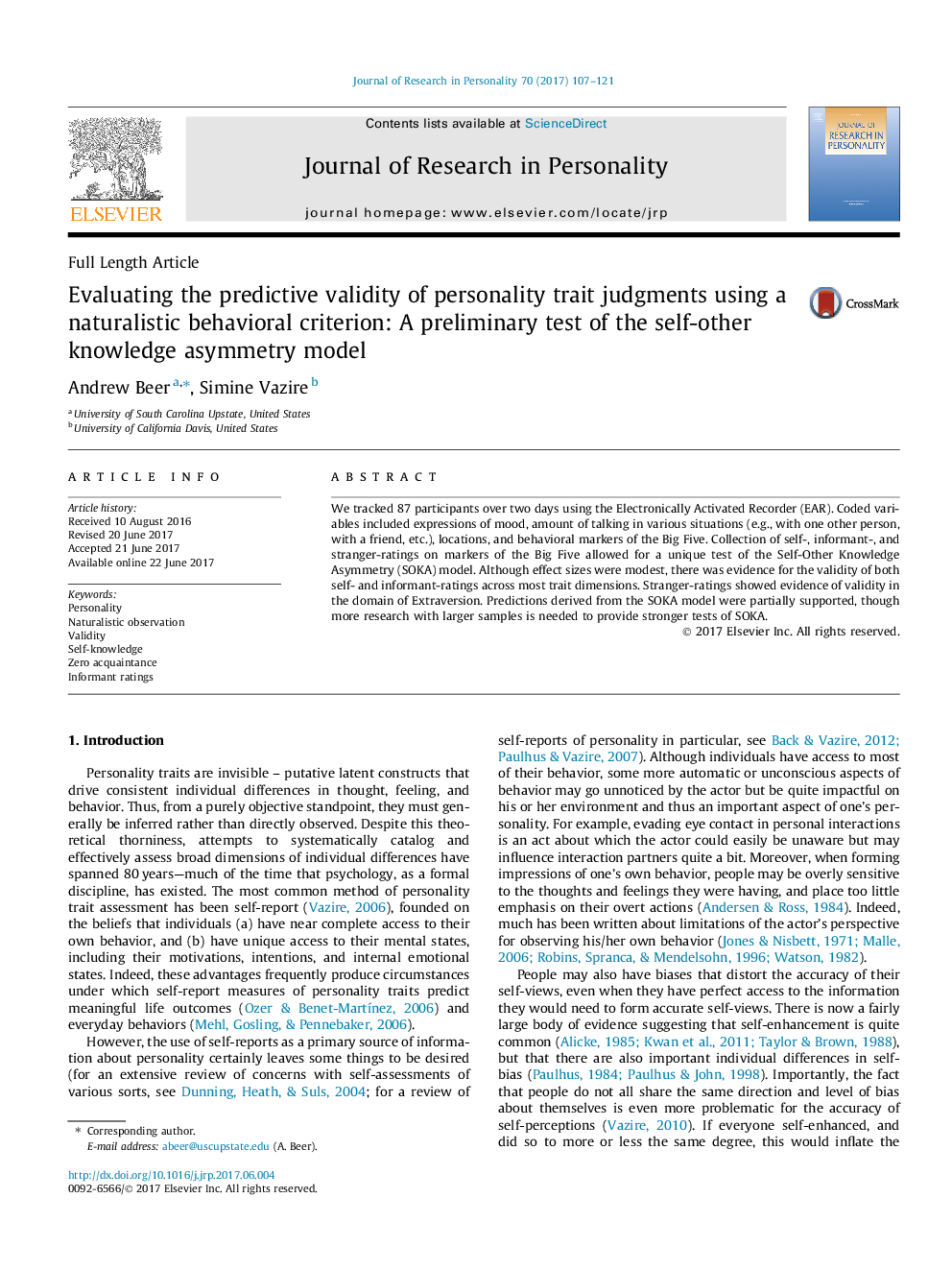| Article ID | Journal | Published Year | Pages | File Type |
|---|---|---|---|---|
| 5046156 | Journal of Research in Personality | 2017 | 15 Pages |
â¢We coded naturally occurring behavior in everyday life.â¢Self and informant ratings of Big Five traits predicted many relevant behaviors.â¢Stranger ratings of Extraversion predicted relevant behavior.â¢Predictions derived from the Self-Other Knowledge Asymmetry model were partially supported.
We tracked 87 participants over two days using the Electronically Activated Recorder (EAR). Coded variables included expressions of mood, amount of talking in various situations (e.g., with one other person, with a friend, etc.), locations, and behavioral markers of the Big Five. Collection of self-, informant-, and stranger-ratings on markers of the Big Five allowed for a unique test of the Self-Other Knowledge Asymmetry (SOKA) model. Although effect sizes were modest, there was evidence for the validity of both self- and informant-ratings across most trait dimensions. Stranger-ratings showed evidence of validity in the domain of Extraversion. Predictions derived from the SOKA model were partially supported, though more research with larger samples is needed to provide stronger tests of SOKA.
